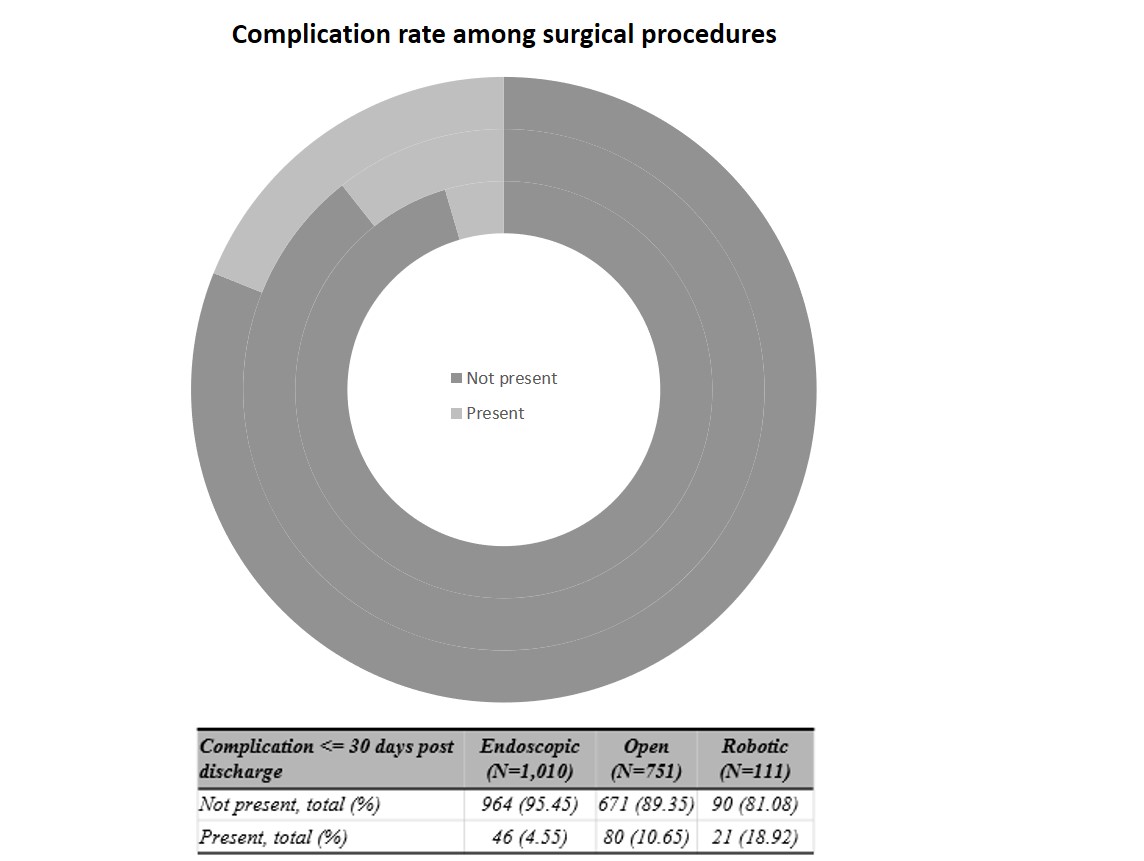Back
Poster, Podium & Video Sessions
Moderated Poster
MP17: Pediatric Urology: Upper & Lower Urinary Tract
MP17-03: Complication Rates Among Different Treatment Modalities for The Surgical Management of Vesicoureteral Reflux in Children
Friday, May 13, 2022
4:30 PM – 5:45 PM
Location: Room 225
Andres Guillen Lozoya*, Candace Granberg, Patricio Gargollo, Rochester, MN
Poster Presenter(s)
Introduction: Vesicoureteral reflux (VUR) is a commonly encountered problem in pediatric urologic practice, affecting approximately 1% of all children, and up to 70% of those presenting with a febrile UTI. Given this common incidence, the economic impact from VUR has been found to be significant, with care-related charges exceeding $100 million annually in the U.S. Optimal management strategies for this condition are controversial and continue to be debated as our understanding of its pathophysiology, clinical course, and long-term sequelae evolve. Urologists have been quick to embrace robotic technologies and apply them to existing surgical procedures despite the greater cost associated with the robotic procedure and reported lower success rate. It has further been observed that complications associated with robotic assisted procedures tend to be more severe and require a higher rate of intervention than open procedures.
Methods: We retrospectively reviewed United HealthCare Electronic Records of patients treated for VUR from January 2020 to January 2021. Data was clustered based on surgical treatment modality: endoscopic, open, and robotic-assisted surgery. Discrete variables were compared using Fisher’s exact test. Difference between groups was considered as statistically significant if p < 0.05.
Results: A total of 1872 patient records were included, with 1,010 endoscopic, 751 open and 111 robotic-assisted surgeries. Mean age at time of procedure was 8.5 months for endoscopic surgery, 10.4 for open surgery and 47.8 for robotic surgery. A majority of patients who underwent endoscopic and open procedures were female (n=858, 85% and n=565, 75.2%, respectively) while males were the majority for robotic procedures (n=62, 55.9%). There was a statistically significant difference in complication rates post-discharge (p < 0.001) with the highest rate in the robotic surgery group (n=21, 18.9%).
Conclusions: Minimally-invasive surgeries comprised the majority of VUR surgeries, with endoscopic procedures utilized most in this cohort. Robotic-assisted surgery had the highest post-discharge complication rate, which was statistically significant. Further study is warranted to assess incremental costs incurred by these complications, which increase the overall cost of robotic procedures even more.
Source of Funding: None

Methods: We retrospectively reviewed United HealthCare Electronic Records of patients treated for VUR from January 2020 to January 2021. Data was clustered based on surgical treatment modality: endoscopic, open, and robotic-assisted surgery. Discrete variables were compared using Fisher’s exact test. Difference between groups was considered as statistically significant if p < 0.05.
Results: A total of 1872 patient records were included, with 1,010 endoscopic, 751 open and 111 robotic-assisted surgeries. Mean age at time of procedure was 8.5 months for endoscopic surgery, 10.4 for open surgery and 47.8 for robotic surgery. A majority of patients who underwent endoscopic and open procedures were female (n=858, 85% and n=565, 75.2%, respectively) while males were the majority for robotic procedures (n=62, 55.9%). There was a statistically significant difference in complication rates post-discharge (p < 0.001) with the highest rate in the robotic surgery group (n=21, 18.9%).
Conclusions: Minimally-invasive surgeries comprised the majority of VUR surgeries, with endoscopic procedures utilized most in this cohort. Robotic-assisted surgery had the highest post-discharge complication rate, which was statistically significant. Further study is warranted to assess incremental costs incurred by these complications, which increase the overall cost of robotic procedures even more.
Source of Funding: None


.jpg)
.jpg)
